PART FIVE
In the fifth part of our new-build steam locomotive projects survey, we analyse those resurrecting extinct British Railways Standard designs.
WORDS: THOMAS BRIGHT
BR STANDARD ‘6MT’/‘CLAN’ 4 ‐ 6‐2 No. 72010 HENGIST
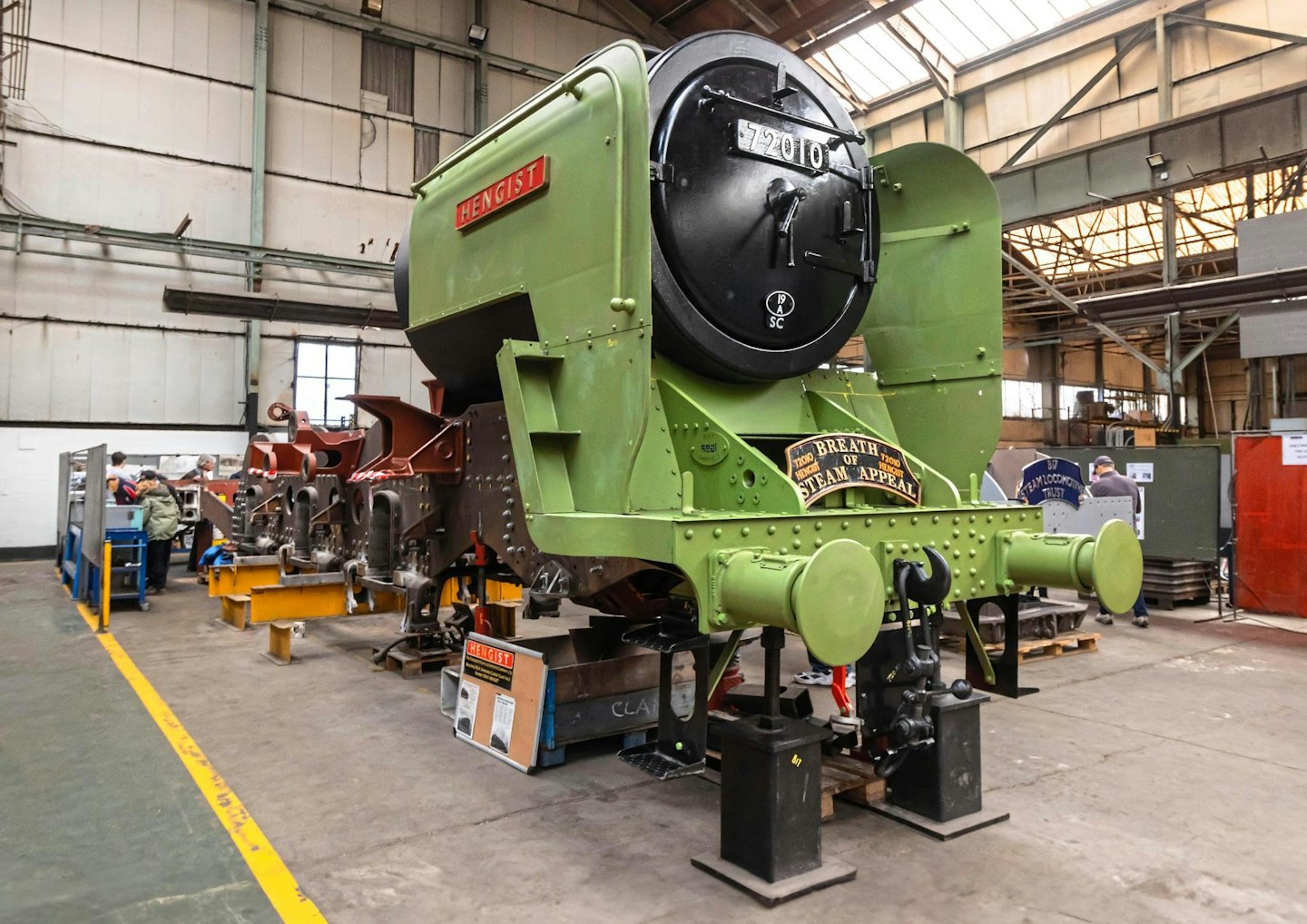
-
p: The Standard Steam Locomotive Company
-
Formed: 1996
-
Estimated total cost: £4 million
-
Raised to date: c.£858,000 (£3,142,000 left to raise)
New-build British Railways ‘Clan’ No. 72010 Hengist is an object lesson in perseverance. It is one of the oldest of the current, active new-build groups – being established in 1996, nigh on 30 years ago – and while the early years of the project were marked by setbacks and slow progress, the scheme’s fortunes in recent years have enjoyed a wholesale turnaround, with the Riddles ‘6MT’ 4 ‐ 6‐2 taking strident steps towards eventual completion. But this improvement in circumstances has been the product of determination and hard work, proving that a project in the doldrums can change things for the better with a similar application of effort.
Since our previous survey, Hengist – a name originally earmarked for the first of a batch of five BR ‘72XXXs’ intended for the Southern Region that were then subsequently cancelled – now looks like a ‘Clan’, with its distinctive smokebox, smoke deflectors and chimney now fitted to the frames. However, this is not the only progress that has been made in the years since our last new-build round-up.
The bogie wheels were cast and delivered to the project’s engineering base at CTL Seal in Sheffield in April 2019, followed by various bogie components throughout the rest of the year and into early 2020. The bogie cannon axleboxes were cast in February 2021; around the same time, the CAD drawings for the planned BR1F tender intended to run behind Hengist were created. In May that year, the rear frame extensions were attached to the main frame plates, while the bogie frames were trial assembled in October. A big milestone came in January 2023 when the bogie wheelsets were assembled at South Devon Railway Engineering, and delivered to Sheffield in the April; at the same time, the smoke deflectors and smokebox were fitted to the frames.
In October 2023, a new dragbox – of an improved and modified design to replace the one originally fitted in 2017 – was fabricated, with the bogie leaf springs being delivered the following month. Last year (2024) alone saw the casting of the pony truck wheels (February), and creation of the pattern for the driving wheels (April), and the casting of the first of the driving wheels by William Cook Cast Products in July. This last activity perhaps signifies how far the project has come since the early days, as WCCP has also sponsored both the casting and machining of the six driving wheels, work worth over £100,000 to the project. As endorsements go, it’s a big one.
So, what’s next? “We are working on a number of things in parallel both on site at CTL Seal and desk work at home,” says Standard Steam Locomotive Company commercial director Bob Ife. “At CTL Seal, we are focusing on the completion of the bogie, phase one of the frames, and refurbishment of the cab, which has been in outside storage for number of years. From our home offices, we are putting out enquiries for the long lead coupled wheel axles and tyres, ordering parts for the pony truck, completing CAD drawings for the coupled wheel cannon axleboxes, and design studies on the firebox and hind cylinder cover.”
The latter will be cast to a modified design based on those fitted to BR ‘8P’ No. 71000 Duke of Gloucester, whereby a rear extension, forming part of the casting, will provide support for the front of the slidebars, with the aim of improving upon the excessive piston ring wear inherent in the original design. The manufacture of the rear cylinder covers has also benefited from a £6,300 grant from the Worshipful Company of Ironmongers – again, another endorsement of Hengist’s progress.
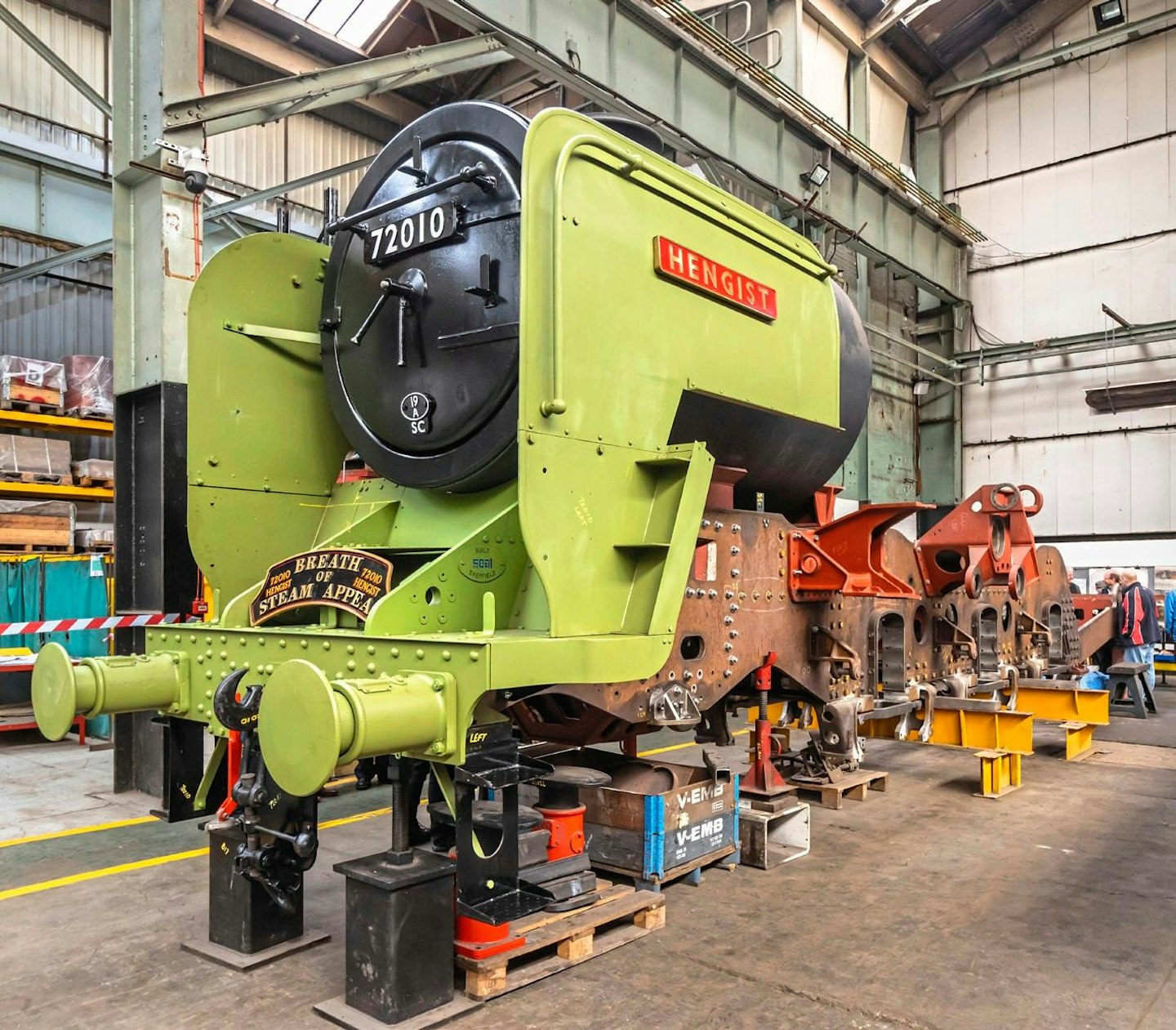
But what of the cylinders themselves? Bob says: “Pattern making for the cylinders has restarted and we hope to cast the cylinders during the second half of 2025. The patterns are being made by one of our long-standing members based in Scotland, who is a volunteer, and the casting of the cylinders is being sponsored by another long-standing Scottish-based member.”
Work is also due to progress in other key areas: “Completing the wheelsets and pony truck could be in 2026, assuming that funding comes in to support that. We need to raise just under £700,000 for that to happen and our fundraiser is actively working on funding for the wheelsets and our pony truck appeal is currently open.
“Ordering of the boiler is dependent on completion of the design and having sufficient funds in place for the down payment and subsequent stage payments. In 2021, we completed a 76-page Design Review for the boiler, comparing a riveted boiler with copper firebox with an all-welded boiler with steel firebox, including costs. We have three budget quotations, two from the UK and one from Germany, which led to the conclusion that an all-steel welded boiler was the best option, provided the width of water legs round the firebox were increased to give the greater stay flexibility needed for a steel firebox and a comprehensive water treatment programme is put in place from the start of operation.
“CAD work has started on the boiler to look at options for increasing the width of the water legs. Once we have understood the effects of this, we can move on to starting the drawings for the boiler. Since the budget quotations, we have also had discussions with a boiler designer who has experience with the design of an all ‐steel welded boiler/firebox.”
It is clearly an exciting time for the ‘Clan’ project, which the SSLC currently aims to complete in 2029. “The most crucial thing to make this happen is continuing and increasing donations. Given sufficient money and a team to spend it, it is possible to build the locomotive in five years, but donations are the crucial enabler.”

The project declined to provide financial information on the grounds of confidentiality, but the trust’s accounts show that, in the last five financial years – from the year ending April 30 2019 to the year ending April 30 2023 – total income has been just over £481,000, or just over £96,000 on average each year. The trust’s own website states that funds raised to date are around £858,000, with a total estimated completion cost of approximately £4 million. Therefore, at the current average rate of fundraising, it would take over 30 years for the SSLC to raise the outstanding £3.1m needed to complete the ‘Clan’. However, it is not clear whether those income figures include sponsorship deals such as WCCP’s of the driving wheels, which obviously have a significant influence not only on the project’s finances, but also the timescales for completion. Nonetheless, the uptick in the project’s physical progress shows that it is assuredly heading in the right direction, with Hengist’s eventual completion now looking like a much more likely prospect that in it did, say, a decade ago.
It is also notable that much of this increased rate of progress has happened since the project moved to CTL Seal. Indeed, as Bob says: “Being in a dry, weatherproof assembly hall with overhead cranes is a tremendous asset to the project. Andy England, the owner of CTL Seal, is our chairman and his connections with the Sheffield engineering community have moved the project on. Members of our Monday Gang have been passed off to drive the cranes and we are able to borrow tooling and micrometers.
“It is mutually beneficial, as fabrication work for Hengist has been used to gain CTL Seal approval to carry out work to ‘British Standard EN 15085 – Railway applications – Welding of railway vehicles and components’.”
Partnerships are vital to Hengist’s success. One of those is with the Advanced Steam Traction Trust, which has suggested improvements to the original ‘Clan’ design to not only improve No. 72010’s performance over its predecessors, but also ensure the ‘6MT’ is fit for today’s main line railway. “The chairman of ASTT is a member of the council of management, and has taken on responsibility for quality and main line certification. The improvements recommended by ASTT – such as increased boiler pressure, improved exhaust system, and changes to the lubrication – are being implemented.”
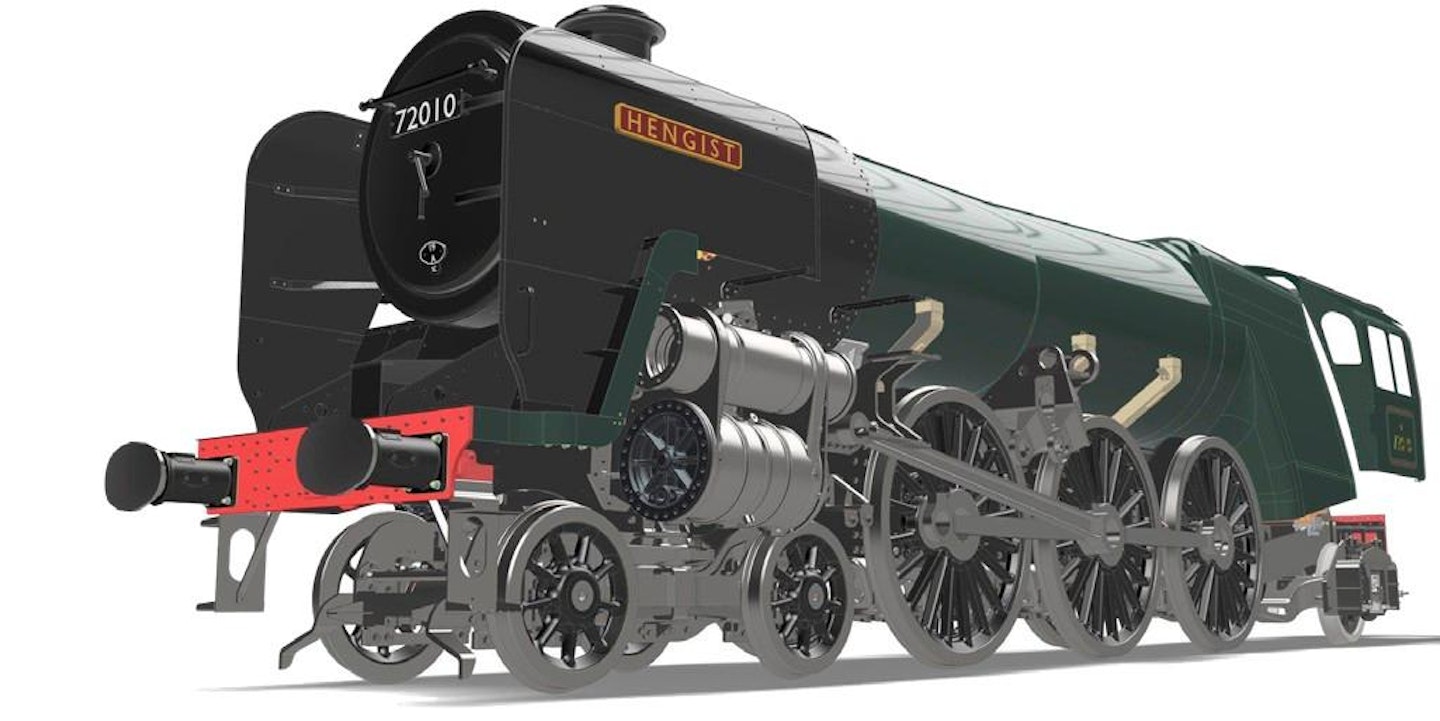
Another important collaboration is the Main Line Steam Builders Group, of which the SSLC is a member. “MLSBG came about because one of the things we have to do to run on the main line is carry out a suitable and sufficient risk assessment. Rather than each group producing one in different formats, all the groups who use Ricardo as their assessment party came together under the guidance of the A1 Trust’s Graham Nicholas to work to the same format. The group now shares other information such as suppliers and experiences with them, cost information and engineering data. We also had a joint presentation on ETCS by AtkinsRelais, which has been working with the A1 Trust on the application of ETCS to steam locomotives.”
The ‘Clan’ undoubtedly still has a long way to go, but the next few years should see significant progress – not least the Riddles ‘Pacific’ finally being placed on its wheels, its cylinders cast, and potentially its boiler ordered. Like all new ‐build projects resurrecting designs from scratch without the benefit of pre-existing components, it has been a challenging journey, but the last five years have seen a marked increase in progress and improvement in the project’s fortunes.
The ‘Clans’ were written off as unsuccessful from some quarters of the railway community, but the same was true of Duke of Gloucester, which has comprehensively proved its naysayers wrong since its restoration in 1986. It will be interesting to see if Hengist pulls off the same feat.
No. 72010 has now arguably passed the credibility threshold and is striding towards critical mass. When it will eventually appear very much depends on fundraising, but the ‘Clan’ seems increasingly likely to grace our rails sooner or later.
BR STANDARD ‘3MT’ 2 ‐ 6‐2T No. 82045
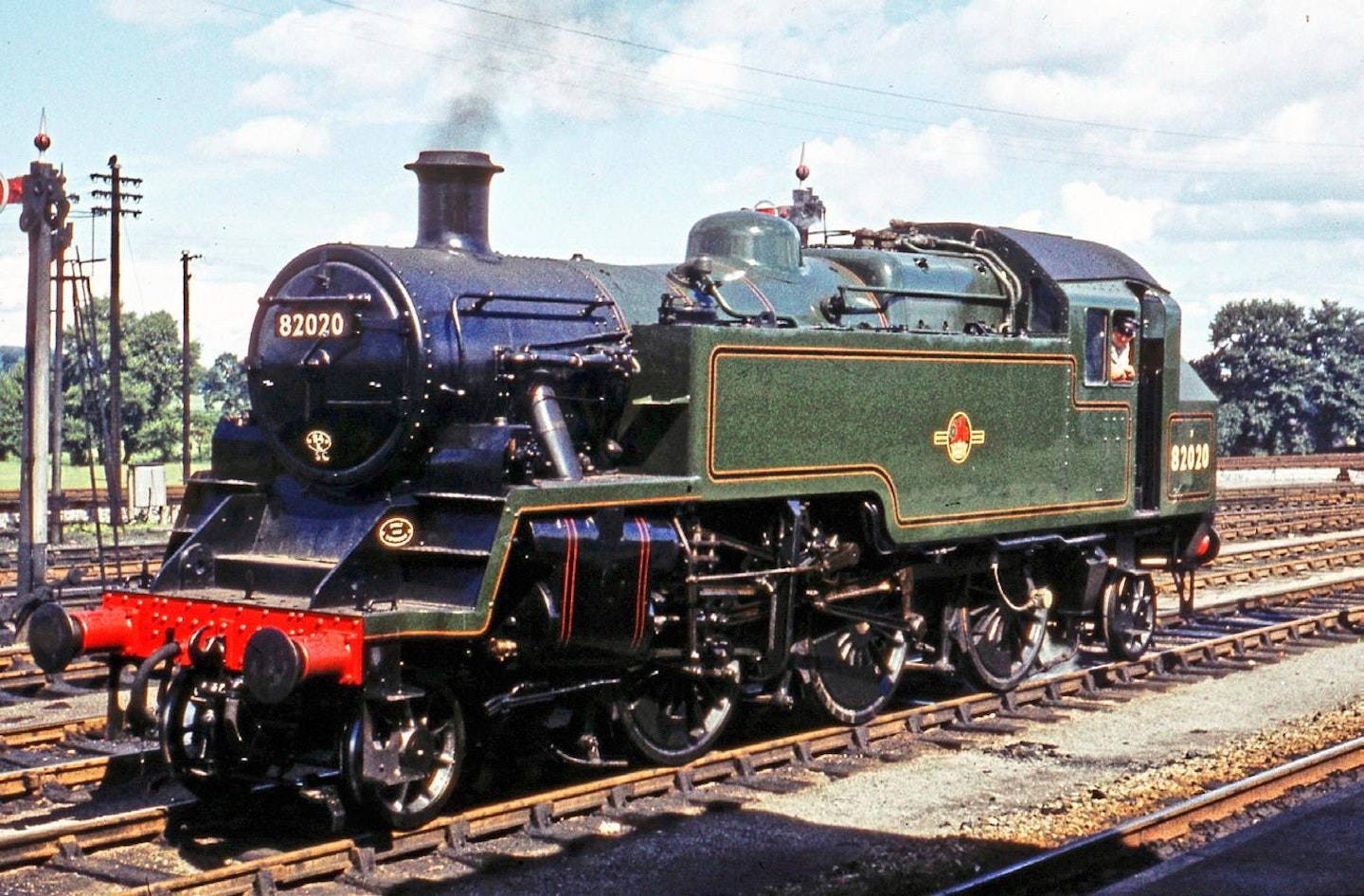
-
Group: The 82045 Steam Locomotive Trust
-
Formed: 1998/2003 (trust incorporated in 2009)
-
Estimated total cost: c. £2 million
-
Spent to date: £1.55 million
Barring any last-minute hiccups, BR ‘3MT’ 2 ‐ 6‐2T No. 82045 is likely to be one of the next two new-builds to enter service – the other frontrunner being Hawksworth ‘County’ No. 1014 County of Glamorgan. It will also be significant in being the 1,000th British Railways Standard locomotive to have been built.
The project reached a major milestone on June 3 2024 when the firebox and boiler shell were temporarily fitted to the frames; by the end of 2024, the whole boiler should be complete and ready for permanent mating to the frames, while the outstanding motion parts should also have been delivered to the locomotive’s base at Bridgnorth on the Severn Valley Railway. Within two years, No. 82045 should be up and running.
Analysing a project so well advanced is therefore almost a moot point, but what exactly is the secret of its success? After all, The 82045 Steam Locomotive Trust would be the first to point out that the Standard 3 tank is far from being the ‘sexiest’ new-build project, yet it has clearly captured enthusiasts’ imaginations – the trust has around 850 supporters and has raised over £1.4 million since 2014. Income for the year ending December 31
2023 was just over £200,000 – a sum which most other new-build groups can only dream of generating. So how has the trust done this for what is arguably a fairly humdrum locomotive, albeit one that is ideal for the majority of heritage railways?
“This is a fully volunteer-orientated project not encumbered by any administrative overheads,” says trust chairman Neil Taylor. “The main workforce is a group of about a dozen individuals who attend every Monday come rain or shine. These individuals have done most of the mechanical work over the last 15 years. Our skill sets cover machining, fabrication and pipework. Some significant items have been contracted to specialists. This includes the tanks, bunker, frames and motion components.
“We do have excellent support from the Severn Valley Railway. The main SVR input has been the locomotive’s boiler and they have made excellent progress since 2020 and the boiler will be completed by the end of this year. This has been achieved to the planned cost and in a timely fashion which, considering the disruption of Covid, is remarkable. It has been great to have such a good relationship and a positive outcome. The boiler will be the first BR Standard boiler to be produced in almost 70 years. No mean feat!
“The success of the project has been very much enhanced by the high visibility of the project. We had the good fortune of being on the route from the Bridgnorth car park to the station for over ten years. This allowed us to recruit members and gain support from the general public.”
Two other key drivers in No. 82045’s success have been engineering maestro Tony Massau and the fundraising efforts of the late Chris Proudfoot. Neil says: “We were devastated by Chris’ untimely passing in 2022 but we have tried to carry on in his inimitable upbeat style. Nothing would exist if it were not for Chris and Tony. Chris would be very pleased with us (I do hope). I miss him very much and it is so sad that he will never see the culmination of our efforts. There is already a small plaque under the fireman’s seat as a dedication to him. “There are many others who are driving efforts behind the scenes, and we are all pulling together as a team on the final leg.”
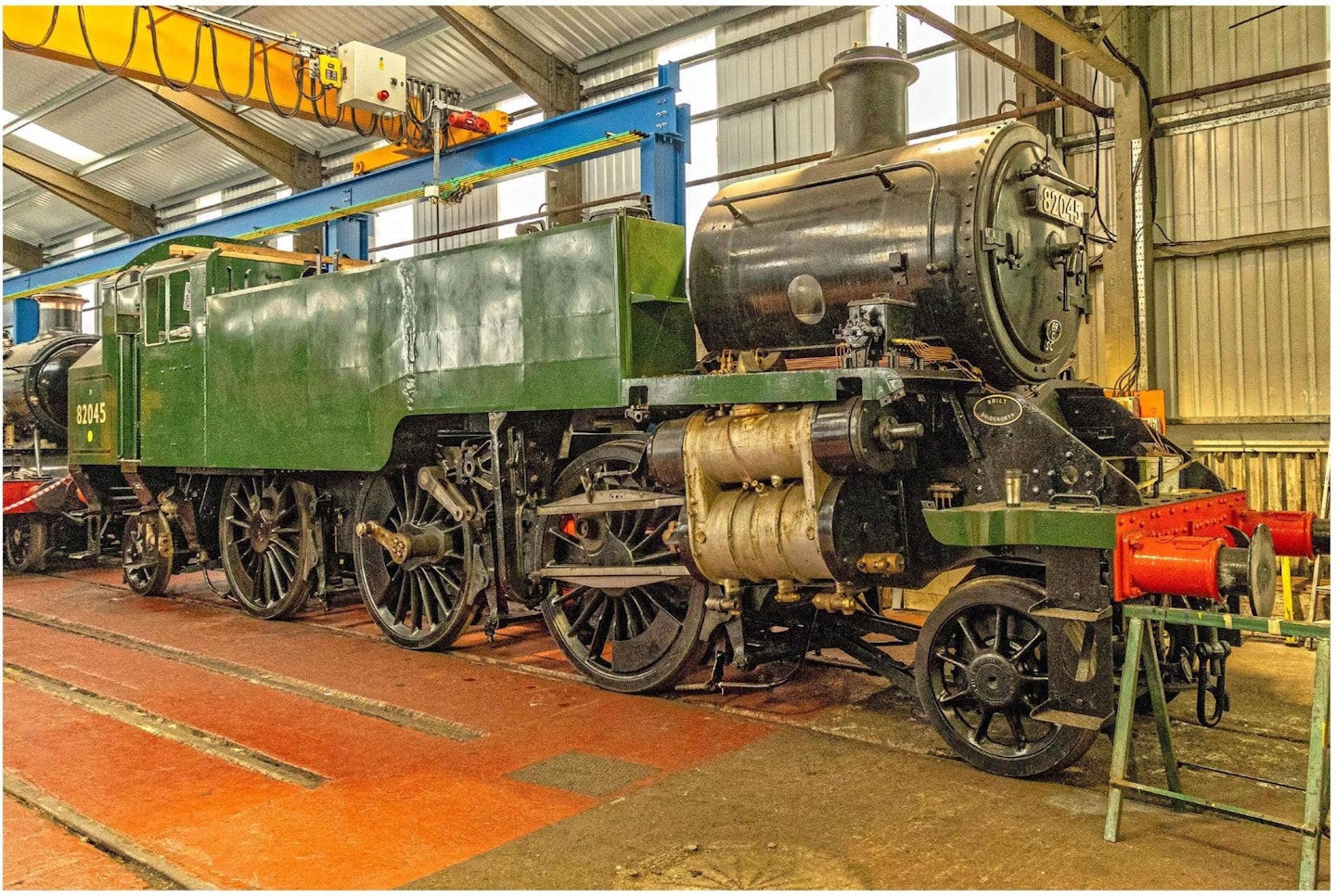
Although the project is now in that final leg, there is still lots to do to complete No. 82045. Currently, the group is working on the pipework and cab fittings, cab flooring, boiler cladding and painting, while the SVR is helping with final assembly, including slide bar alignment, valve assembly and setting, and painting. Neil adds: “Please do not underestimate the literally hundreds of brackets, clips, unions, covers, and so on that need making. Every few weeks we are confronted with another set of flat pieces of material that need bending or welding. This is almost endless!”
As for when the outstanding parts will come together, Neil says: “We do not have a master plan. Experience says that it will often get de-railed. However, when we are near a major milestone, I have been doing a mini plan. So, for example, the trial fitting of the boiler went to plan in the last couple of months when there was a pre-determined sequence. That has proved to the joint team (SVR and 82045), that we can work to a plan, when we are in control.”
In terms of the estimated date for completion, “we are only saying ‘about 2 years’,” says Neil. “However, within that timescale there will need to be various trials and stages, and the launch may be at the end of that process. I note that Beachy Head has taken the time to get the running-in process correct.”
However, with the finishing line now firmly in sight, the trust estimates that the all-up cost for completing No. 82045 will be around £2 million – up significantly from the estimated £1.1 million total quoted in our previous survey. “I suspect that the original estimates were both optimistic and unaware of the commercial forces that have escalated costs significantly over recent times,” explains Neil. “I would say that while manhour costs have not risen significantly, material and overhead costs have rocketed. I have found that in the last four or five years, costs overall have escalated by 25%-30%.”
He adds: “It is also worth noting that 82045 is 100% a new locomotive. We did not have the good fortune of a wheelset, frames or a boiler to start with, so the locomotive is completely new. We have so far invested £1.55m (up to the end of 2023) in the locomotive and have a good cash balance to fund the next 12 months of activities. We would like to raise a further £300,000 in order to be assured of prompt completion and be in a healthy position for the early running of the locomotive.
“Expenditure varies dramatically between years, as some high-cost items cause large peaks. This year will be a high spend year with boiler and motion costs meaning big outlays ‘in-year’. But, we can see our way to funding the project to completion.”
What about the future? The late Chris Proudfoot previously floated the idea of batch-building further ‘Standard 3’ tanks, primarily because they are so well-suited to modern-day heritage railways, occupying a sweet spot between sufficient power and being of an ideal size/weight, whilst also being economic to operate and relatively easy to maintain. Plus, being a tank engine, they can run just as well bunker-first as they can chimney-first – a vital attribute when the locomotive will likely spend 50% of its time working in reverse. Given the experience gained in building No. 82045, might we see further examples in future?
Neil says: “I think that I speak for everyone that there is no real chance of us building another member of the fleet. Most of the team started the journey in their 60s and they are now well into their 70s. However, this is an example of the enthusiasm and vision that Chris used to inspire us all. Perhaps not many people believed it at the time, but these things do not happen at all unless you have a vision. This is the sort of talk that made Britain great!”
While No. 82045 may remain as the sole example of its kind, it nonetheless proves that even an ‘unsexy’ locomotive can gain sufficient support if it is well publicised and clear in its objectives, and has a strong management team. No one in the trust is kidding themselves that No. 82045 has the same ‘wow factor’ as locomotives like Prince of Wales, The Unknown Warrior or Beachy Head. Instead, they have focused on its plentiful practical attributes – an approach that has paid dividends. As a result, No. 82045 will be steaming along the Severn Valley Railway very soon indeed.
BR STANDARD ‘2MT’ 2 ‐ 6‐2T No. 84030
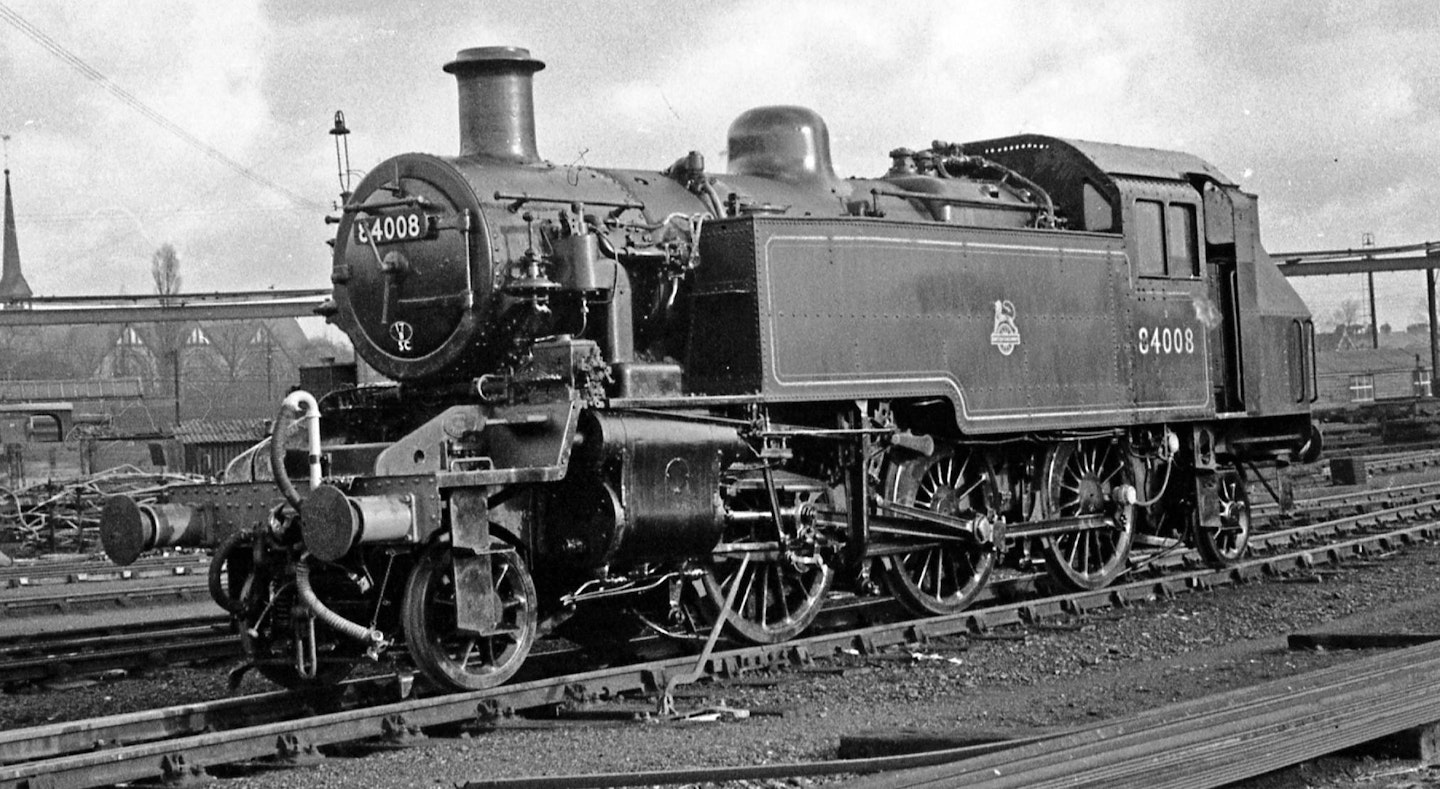
-
Group: The Bluebell Railway Standard Class 2 Project
-
Formed: 1983
-
Estimated total cost: N/A
-
Raised to date: N/A
Of all the established new-build projects, No. 84030 is arguably one of the most obscure, as the small but dedicated team behind it rarely seeks publicity, instead focusing on working on the locomotive. Indeed, describing the Standard Class 2 tank as a new-build stretches the definition of the term, when the bulk of the finished locomotive – its boiler, cylinders, motion, and the majority of its frames and wheels – will actually be 1956-built Standard ‘2MT’ 2 ‐ 6‐0 No. 78059. As the Riddles ‘Mogul’ had been rescued from Barry scrapyard by the Bluebell Railway in May 1983 without a tender, it was decided to convert the hulk into the 31st ‘84XXX’ tank, as none of the originals had been preserved. Furthermore, the ‘78XXX’ 2 ‐ 6‐0s were never allocated to the Southern Region, whereas some ‘2MT’ tanks (Nos. 8402029) were – an important consideration for this Bluebell-based project.
From the outset, this has been something of a slow-burn restorationcum-conversion, with the first major milestone coming in December 2011 with the grafting of the new rear extension frames to support the cab and bunker to No. 78059’s existing main frames. Then, in July 2018, the frames were lowered onto the driving wheels. Since then, work has mostly been focused on building No. 84030’s bunker and side tanks, the latter of which have been built by the team restoring GWR 2 ‐ 8‐0T No. 4253 at the Kent & East Sussex Railway. The tanks were temporarily fitted to No. 84030 in July 2023, which – along with the part-built bunker – all gives a good impression of what the ‘2MT’ tank will look like when eventually completed.
Project Tony Sullivan told Steam Railway: “Progress with the project has not been as quick as we had hoped, mainly because Covid got in the way and set us back by at least two years. However, the bunker is now well on the way to completion with all panels in position, and bunker toolboxes fabricated and positioned, although there is still welding and riveting to complete as well as the fabrication of the top beading and some of the angle iron stiffeners. The side tanks have been roughly positioned on the frames; the necessary packing pieces will be made once the boiler is in position.
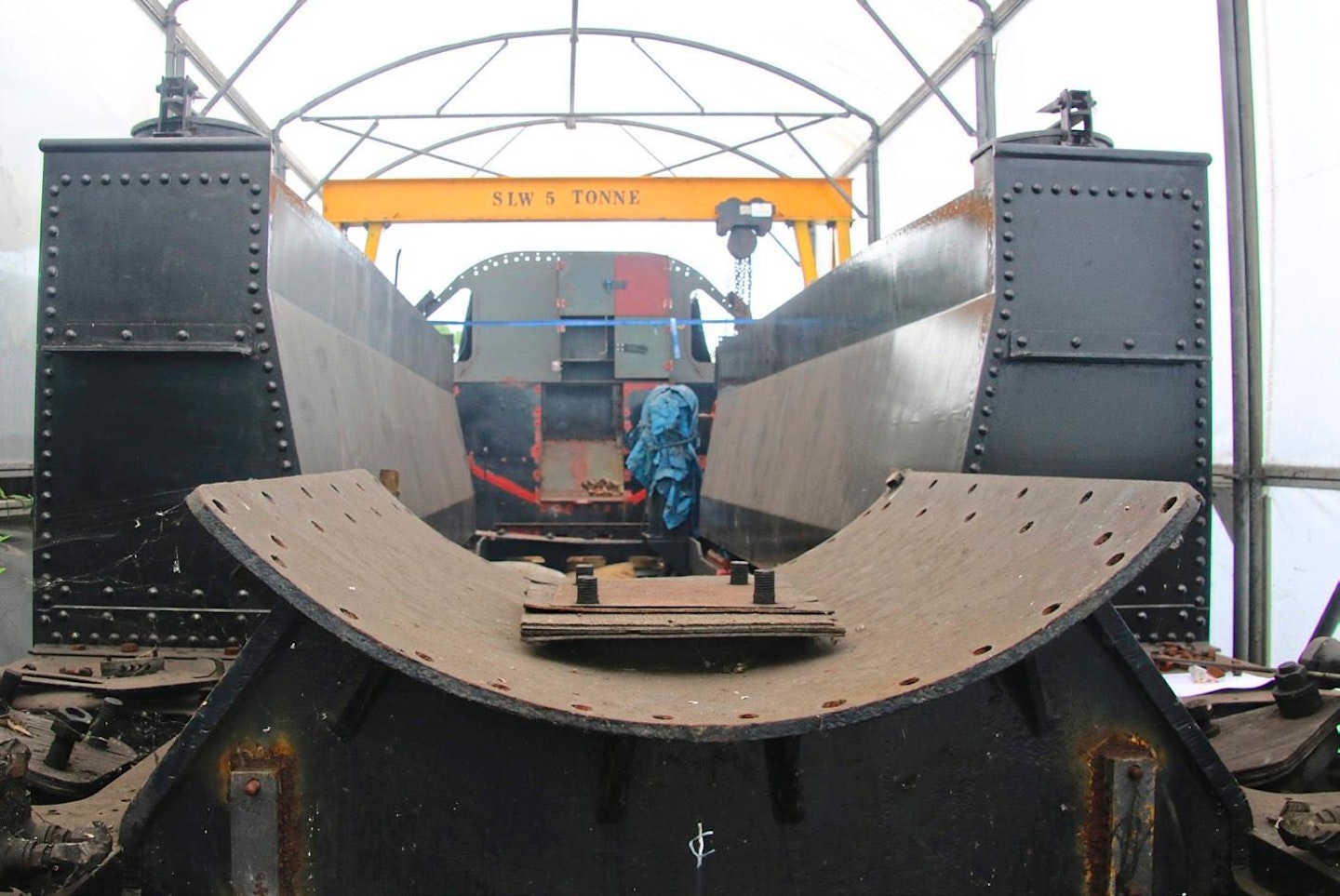
“Work has now started on the cab floor and the production of manufacturing drawings for the cab sides and roof. We hope to have the bunker complete by the end of this year and the cab panels ready for assembly.”
The biggest outstanding component to complete is No. 78059’s boiler. Tony says: “We are currently carrying out a survey of the boiler and all the other fittings required to complete the rebuild in order to establish the extent of the work required together with the costings. This will be dependent upon the funds being available.”
Gauging how well No. 84030 is performing or how soon it might be finished by analysing its finances – as we have for other new-build projects – is challenging, as the group is not a standalone charity, nor did it choose to divulge this information to Steam Railway. However, as we have already explained, you cannot compare No. 84030 to other new-build projects because the group started with moreor-less a complete locomotive to begin with. Indeed, the 84030 project is arguably more of a traditional ex-Barry locomotive restoration, albeit with new-build elements thrown in – but considering how many locomotives these days are receiving all-new cylinders, wheels, tenders and other ‘new-build’ components as part of their regular restorations/overhauls, No. 84030 isn’t all that different. Indeed, No. 84030 is closer in concept to the West Somerset Railway’s Great Western ‘Mogul’
No. 9351, which was converted from a ‘Large Prairie’ tank into a 2 ‐ 6‐0 tender locomotive in 2004, based on designs sketched out at Swindon under both Churchward and Collett but never put into production. Therefore, judging it by the same yardstick as you would for, say, Prince of Wales or The Unknown Warrior is largely meaningless.
Nonetheless, No. 84030 is moving in the right direction, and you can bet on seeing the 31st Standard ‘2MT’ 2 ‐ 6‐2T at some point in the not-too-distant future.
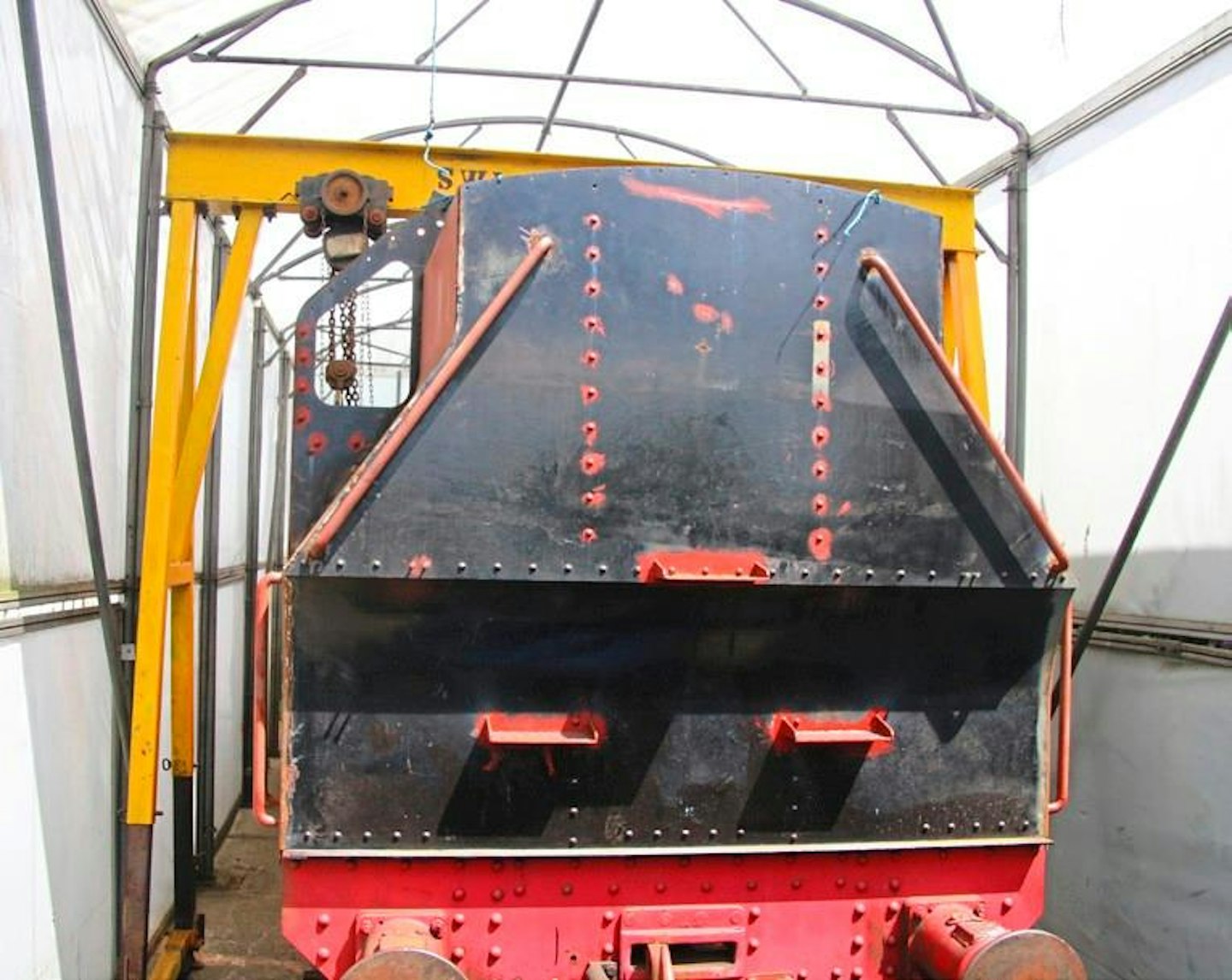
DORMANT: BR STANDARD ‘3MT’ 2 ‐ 6‐0 No. 77021
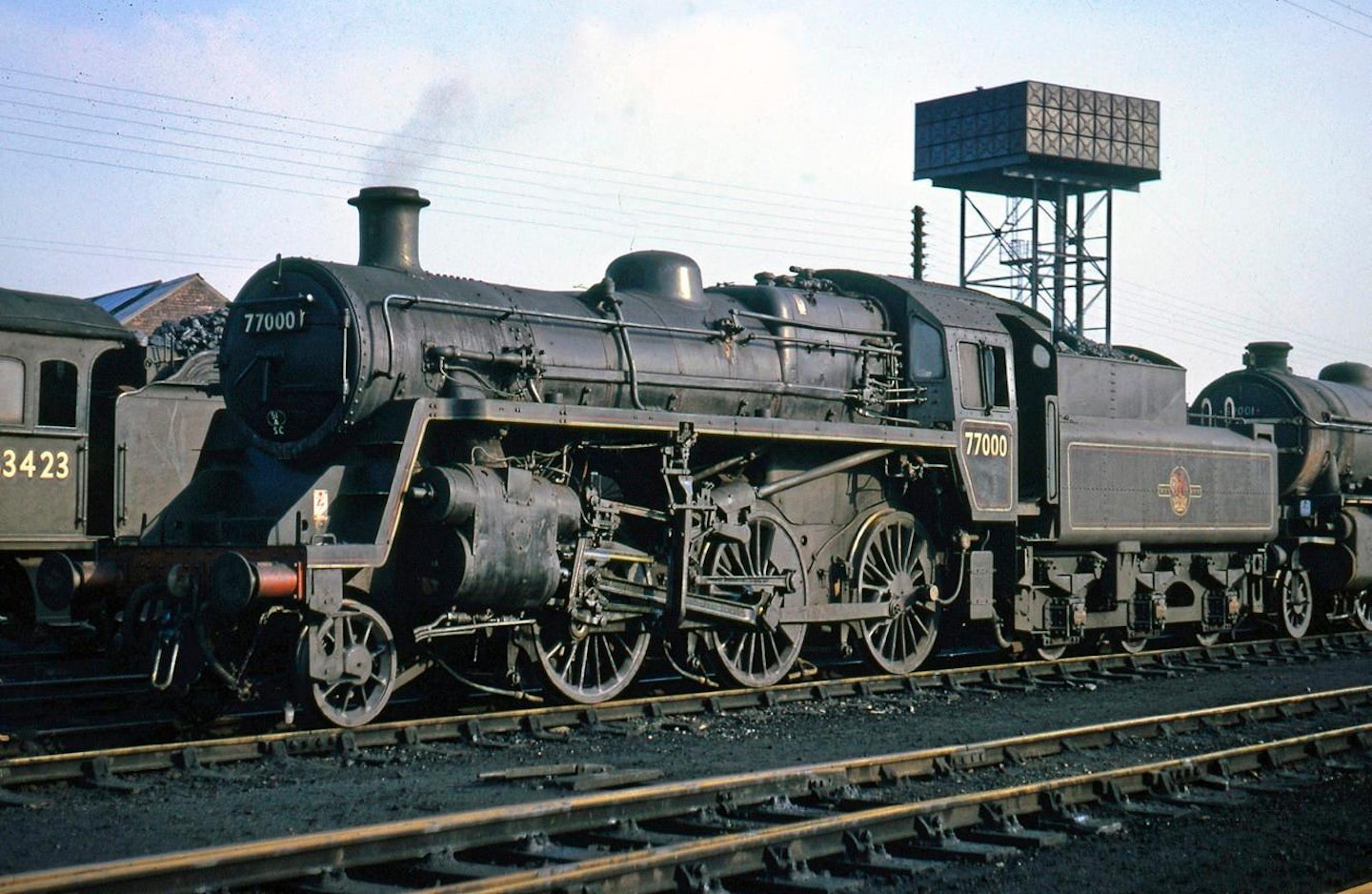
-
Group: 77021 Locomotive Group
-
Formed: 2013
-
Estimated total cost: N/A
-
Raised to date: N/A
In our previous new-build project survey in 2019, we described the bid to build No. 77021 – the 21st BR Standard ‘3MT’ 2 ‐ 6‐0 – as dormant, as no outward progress appeared to be being made. Indeed, the project even acknowledged in a Facebook post in April that year that Steam Railway was “quite right when they recently described the project as ‘dormant’, but it’s certainly not dead.”
Sadly, our assessment of the project’s status has not changed, as there have been no further updates in the last five years. Indeed, as far as we can ascertain, this is very much a oneman-band project, spearheaded by Alastair Connell, who first launched the scheme in the summer of 2013. Aside from the partially complete smokebox door and numerous other sundry items, it appears very few – if any – other components have been made for No. 77021 in the last five years. The link to the project’s official website is still dead, and the Facebook page – the project’s only public online presence – hasn’t been updated since the 2019 post commenting on SR’s previous new-build survey. Furthermore, our attempts at contacting Mr Connell to find out more about No. 77021’s status and the future plans for the project have received no response. We can therefore only conclude that the project is very much in abeyance, if indeed it is still ‘active’ at all.
It would be a shame if preservation were denied a Standard 3 ‘Mogul’. None were preserved, meaning that once Nos. 72010, 82045 and 84030 are complete, a ‘77XXX’ will be the only Standard design not represented in preservation. And, like No. 82045, a Standard ‘3MT’ 2 ‐ 6‐0 would be a hugely useful locomotive for heritage lines, sharing the same attributes as No. 82045 with the additional advantage of greater coal and water capacity.
It is sad then that, based on the evidence available, it is highly unlikely that No. 77021 will ever see the light of day as things stand currently, although we would welcome news to the contrary. It seems that building a new ‘77XXX’ is a cursed endeavour, as a similar project mooted in the mid-1990s also came to nothing.
Each issue of Steam Railway delivers a wealth of information that spans the past, present and future of our beloved railways. Featuring stunning photography, exclusive stories and expert analysis, Steam Railway is a collector's item for every railway enthusiast.
Choose the right subscription for you and get instant digital access to the latest issue.

